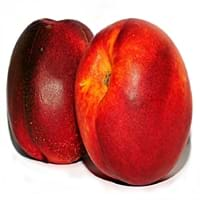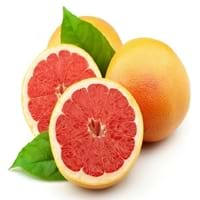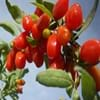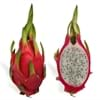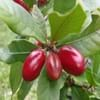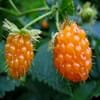Health Benefits
Cancer prevention, Heart care
Arthritis prevention, Asthma treatment, Cancer prevention, Kidney stone treatment, Liver health
General Benefits
Anti oxidant properties, Boosts immune system, Digestive aid, Eye care, Helps in weight loss, Maintains healthy cholesterol level
Anti oxidant properties, Boosts immune system, Cures cough, Eye care, Fights against infections, Helps in weight loss, Improves eye vision, Maintains healthy cholesterol level, Treatment of common cold
Skin Benefits
Anti-aging benefits, Reduces wrinkles, Skin rejuvenation
Anti-aging benefits, Brightens and lightens complexion, Reduces wrinkles, Treatment of dark spots
Hair Benefits
Protects hair
Prevents hair loss, Protects hair, Regulates hair growth, Treatment of dandruff
Allergy Symptoms
Anaphylaxis, Asthma, Breathing difficulty, Diarrhea, Hives, Itching, Itchy eyes, Skin rash, Sneezing, Swelling of mouth, tongue or lips, Tingling sensation in mouth, Vomiting, Watery eyes, Wheezing
Abdominal pains, Decrease in blood pressure, Diarrhea, Dizziness, Eczema, Hives, Lightheadedness, Nausea, Runny nose, Swelling of mouth, tongue or lips, Vomiting
Side Effects
Allergic reaction, Headache, Nausea
Allergic reaction
Best Time to Eat
Best if taken as a breakfast (or empty stomach), As a snack in the late afternoon, Eat the fresh ones, avoid mixing with any other foods, don't eat after meal., Morning time (before lunch)
As a snack in the late afternoon, Don't consume at night and before bed, Don't eat after meal, Morning time (before lunch), Strictly avoid empty stomach
Vitamin B5 (Pantothenic Acid)
Vitamin C (Ascorbic Acid)
Vitamin K (Phyllochinone)
Calories in Fresh Fruit with Peel
Not Available
Calories in Fresh Fruit without Peel
Not Available
Calories in Frozen Form
Not Available
Not Available
Calories in Dried Form
Not Available
Calories in Canned Form
Not Available
Not Available
Type
Tree fruit
Citrus, Tree fruit
Season
Autumn, Summer
All seasons
Varieties
Arctic Jay, Artic Rose, Artic Star, Armking, Desert Dawn, Fairlane, Fantasia, Silver Lode, Snow Queen, Stanwick and Stark Sunglo
Rio Star, Flame, Thompson and Star Ruby
Color
Orange, Pink, Red, Yellow
Pink, Red
Texture
Succulent
Succulent
Soil Type
Sandy loam
Loam, Well-drained
Climatic Conditions
Sunny, Warm
Humid, Warm
Facts about
- The name ‘nectarine’ is with reference to the sweet food the gods eat, ‘nectar’.
- Nectarines are sometimes called ‘shaved peaches’ because their skin is smooth with no fuzz.
- Grapefruit is used to protect wooden tools due to its anti-fungal properties.
- It grows in clusters as grapes & hence called as grapefruit.
- This fruit tastes delicious when paired with fish, e.g. in fish salads.
Spirits
Not Available
Yes
Other Countries
Argentina, Chile, Egypt, Greece, Iran, Italy, Spain, Turkey, United States of America
Argentina, India, Israel, Mexico, South Africa, Sudan, Thailand, Turkey, United States of America
Top Importer
Germany
Japan
Top Exporter
Spain
United States of America
Botanical Name
Prunus persica
Citrus paradisi
Synonym
Not Available
Not Available
Subkingdom
Tracheobionta
Tracheobionta
Division
Magnoliophyta
Magnoliophyta
Class
Magnoliopsida
Magnoliopsida
Species
P. persica
C. × paradisi
Generic Group
Rose
Citrus fruit
Compare Nectarine and Pink Grapefruit
It is important compare Nectarine and Pink Grapefruit as both the fruits have a different nutritional value. Their comparison can be done on the basis of their vitamin and mineral content, calories, benefits as well as characteristics, making it easier for us to choose the best fruit for our diet. Their general health benefits are as follows:
Nectarine Benefits: anti oxidant properties, boosts immune system, digestive aid, eye care, helps in weight loss and maintains healthy cholesterol level.
Pink Grapefruit Benefits: anti oxidant properties, boosts immune system, cures cough, eye care, fights against infections, helps in weight loss, improves eye vision, maintains healthy cholesterol level and treatment of common cold.
Fruits are also used as a remedy for various hair problems. The hair benefits of Nectarine are: protects hair and hair benefits of Pink Grapefruit are: prevents hair loss, protects hair, regulates hair growth and treatment of dandruff. Some fruits are known to cause allergic reactions. The allergy symptoms of first fruit are: anaphylaxis, asthma, breathing difficulty, diarrhea, hives, itching, itchy eyes, skin rash, sneezing, swelling of mouth, tongue or lips, tingling sensation in mouth, vomiting, watery eyes and wheezing and the symptoms of second fruit are: abdominal pains, decrease in blood pressure, diarrhea, dizziness, eczema, hives, lightheadedness, nausea, runny nose, swelling of mouth tongue or lips and vomiting. Get sorted Nectarine vs Pink Grapefruit comparison with the help of fruit comparison tool by fruitvs.com.
